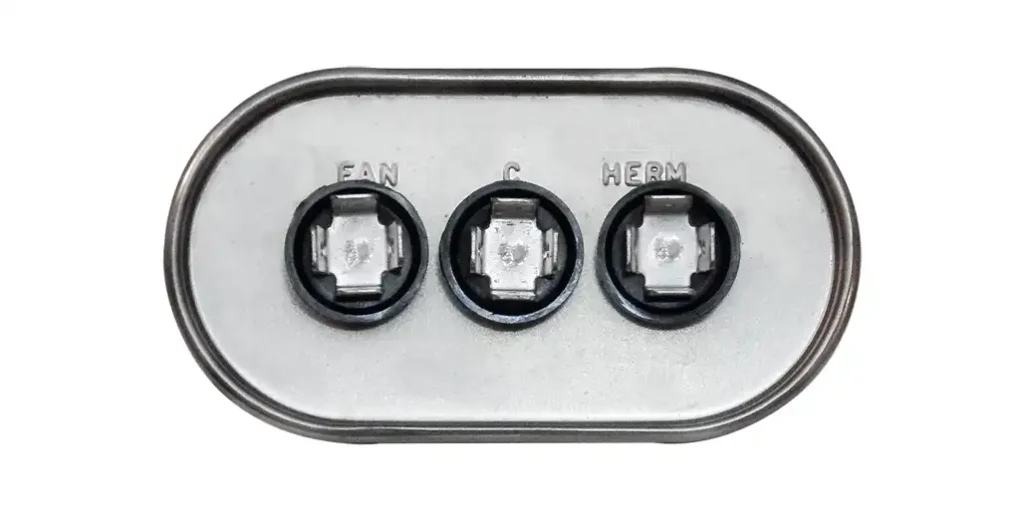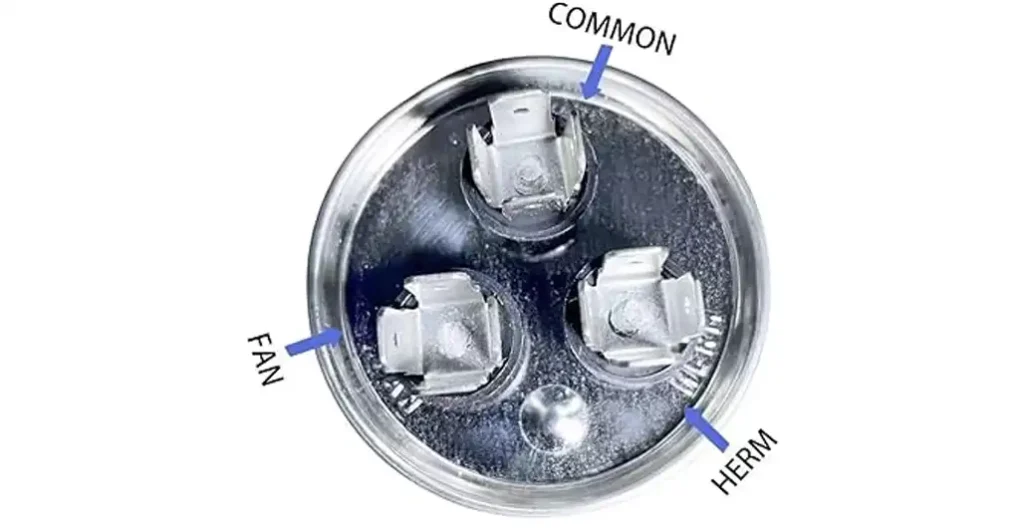Capacitors are the unsung heroes of electronic circuits, wielding immense power in managing electric charge. Among the intricacies of capacitor terminology lies a term that often perplexes many: Herm. What exactly is Herm on a capacitor?
Let’s delve into this enigma to uncover its significance and shed light on its mysteries.
What is HERM on a Capacitor?

Herm on a capacitor refers to the unit of inductance, denoted by the symbol “H.” It represents the ability of a capacitor to store energy in an electric field when a voltage is applied across its terminals. This stored energy is released when the voltage is removed, making capacitors essential for various electronic applications.
Significance of HERM
In the realm of electronics, Herm holds significant importance as it is a unit of measurement for inductance. Inductance refers to the property of an electrical component, such as a capacitor, to resist changes in the flow of electric current. This property plays a crucial role in the behavior and performance of capacitors within electronic circuits.
Understanding Herm allows engineers and enthusiasts to assess the energy storage capabilities of capacitors. Capacitors with higher Herm values can store more energy, making them suitable for applications requiring larger amounts of stored charge. On the other hand, capacitors with lower Herm values may be preferable for tasks where rapid discharge or lower energy storage is desired.
Moreover, Herm influences various aspects of circuit design and functionality. Engineers consider Herm values when selecting capacitors for specific applications, ensuring optimal performance and reliability. Additionally, Herm plays a role in tasks such as filtering, coupling, and phase shifting in AC circuits.
Applications of Capacitors with HERM

Here’s a rundown of the applications of capacitors with Herm:
Capacitors with specific Herm values find extensive use across various electronic applications due to their energy storage capabilities and performance characteristics. Some common applications include:
Power Supplies: Capacitors with appropriate Herm values are integral components in power supply circuits, where they help stabilize voltage levels and filter out unwanted noise or fluctuations in the electrical signal.
Signal Filtering: Herm plays a crucial role in signal filtering circuits, where capacitors are used to attenuate or block specific frequencies, allowing only desired signals to pass through. This application is vital in audio systems, telecommunications, and data transmission.
Timing Circuits: Capacitors with precise Herm values are utilized in timing circuits to control the frequency and duration of electronic pulses. These circuits are essential in applications such as oscillators, timers, and clock generators.
Motor Control: In motor control circuits, capacitors with suitable Herm values are employed to regulate the starting, speed, and direction of electric motors. They help manage the flow of current and provide the necessary energy for motor operation.
Energy Storage Systems: Capacitors with high Herm values are used in energy storage systems, such as capacitive energy storage banks or capacitor banks, to store and release large amounts of electrical energy efficiently. These systems are employed in renewable energy applications, power factor correction, and electric vehicle charging stations.
AC Coupling: Capacitors with Herm values are commonly used for AC coupling in electronic circuits, allowing the transfer of AC signals while blocking DC components. This application is vital in audio amplifiers, data transmission, and radio frequency (RF) circuits.
Phase Shifting: Capacitors with specific Herm values are employed in phase shifting circuits to alter the phase relationship between input and output signals. This technique finds applications in audio processing, power factor correction, and frequency modulation.
Capacitors with Herm find versatile applications across a wide range of electronic systems, contributing to their functionality, performance, and efficiency in various industries and technological domains.
Capacitor Selection Based on HERM

Here’s an explanation of capacitor selection based on Herm:
Engineers consider various factors to ensure optimal performance and reliability when selecting capacitors for specific electronic applications. Herm, being a crucial parameter, plays a significant role in the selection process.
Here’s how Herm influences capacitor selection:
- Application Requirements: The first step in capacitor selection is understanding the requirements of the application. Engineers identify factors such as voltage rating, capacitance, frequency, and operating conditions to determine the capacitor’s specifications.
- Herm Rating: Capacitors are available in a range of Herm ratings, representing their inductance values. Engineers assess the Herm rating based on the application’s energy storage requirements and the desired performance characteristics. Capacitors with higher Herm values can store more energy and may be suitable for applications requiring larger amounts of stored charge.
- Voltage Rating: Capacitors must have a voltage rating that exceeds the maximum voltage expected in the circuit. Engineers ensure that the selected capacitor can withstand the voltage without risking damage or failure.
- Capacitance: Capacitance refers to the ability of a capacitor to store charge. Engineers choose capacitors with the appropriate capacitance value based on the application’s energy storage and filtering requirements. Capacitance is measured in farads (F) or microfarads (μF).
- Tolerance: Capacitors have tolerance values that indicate the acceptable deviation from their specified capacitance. Engineers select capacitors with tolerances that meet the application’s precision requirements and ensure consistent performance.
- Dielectric Material: The dielectric material used in capacitors affects their performance and reliability. Engineers consider factors such as dielectric strength, temperature stability, and environmental compatibility when selecting capacitors for specific applications.
- Construction: Capacitors come in various construction types, including ceramic, electrolytic, film, and tantalum capacitors. Each type offers different performance characteristics and is suitable for specific applications. Engineers choose the construction type based on factors such as size, cost, reliability, and performance requirements.
Carefully considering Herm along with other critical parameters, engineers can select capacitors that meet the unique needs of their applications, ensuring optimal performance, reliability, and efficiency in electronic circuits.
FAQs
How does HERM differ from capacitance?
While capacitance measures the ability of a capacitor to store charge, Herm quantifies its inductance, determining its energy storage capacity.
Can capacitors with higher Herm values store more energy?
Yes, capacitors with higher Herm values have a greater ability to store energy, making them suitable for applications requiring larger amounts of stored charge.
What factors influence Herm on a capacitor?
Herm on a capacitor is influenced by various factors, including the capacitor’s physical dimensions, dielectric material, and construction.
Is Herm the same as Henry in terms of measurement?
Yes, Herm is equivalent to Henry, both representing the unit of inductance in electrical systems.
How do I calculate Herm for a specific capacitor?
Herm can be calculated using capacitor formulas that consider the capacitor’s physical properties, such as its dimensions and dielectric material.
Can capacitors with Herm values be used in AC circuits?
Yes, capacitors with appropriate Herm values are commonly used in AC circuits for tasks such as filtering, coupling, and phase shifting.
Conclusion
In unraveling the mystery of Herm on a capacitor, we’ve gained insight into its significance and applications within electronic systems. Understanding Herm is paramount for engineers and enthusiasts seeking to harness the full potential of capacitors in their designs and projects.




















